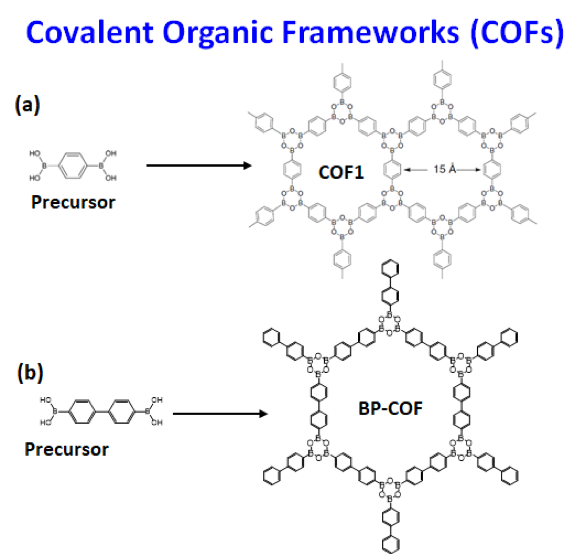Home | Research | Publications | Members | Contact
Covalent organic frameworks (COFs) are 2D molecular networks formed through covalent self-assembly of precursor molecules (two examples are shown in Fig. 1).1 COFs provide a new strategy for creating 2D materials by designing the unit cell as a molecule and then stitching the unit cells together into a crystal through molecular self-assembly.2 The Crommie group is actively pursuing this bottom-up strategy of material discovery through exploration of different 2D COF systems. The power of this technique is that the tools of organic chemistry provide extraordinary flexibility regarding the different molecular unit cells that can be fabricated.








